Boatbuilding creates a lot of dust, and to keep it from spreading everywhere, including into my lungs, I have several vacuum systems to collect it. I have a two-bag dust collector that gathers the coarse sawdust from my tablesaw, jointer, and thickness planer, and I rely on two shop vacuums to catch the fine dust coming from sanders and to clean up whatever winds up on the floor and workbench. The filters in those two vacuums need to be cleaned periodically, and it’s a job I don’t much like. When it was time to clean a filter, I used to take it outside, hold it in an open grocery bag, and shake it. I wore an N-95 mask to protect myself from the powdery dust that drifted up from the bag.There had to be a better way, and it didn’t take long to find one: let centrifugal force do the job. I’d already figured that out with my food processor: Rather than do an unavoidably ineffective job with a spatula, I pour out the blended batter and spin the blade in the empty processor bowl. It’s instantly clean. Spinning a shop vacuum filter is equally effective. All it takes are a couple of plywood discs, a machine screw with washers and a nut, and an electric drill. To contain the dust, a 5-gallon bucket and a piece of plywood big enough to cover its top will do the job. My smaller shop vacuum had apparently been used to clean up after drywall work, and its filter was coated with compacted dust along with a variety of other debris. I had been given this vacuum, and it may have been used for many jobs without having the filter cleaned.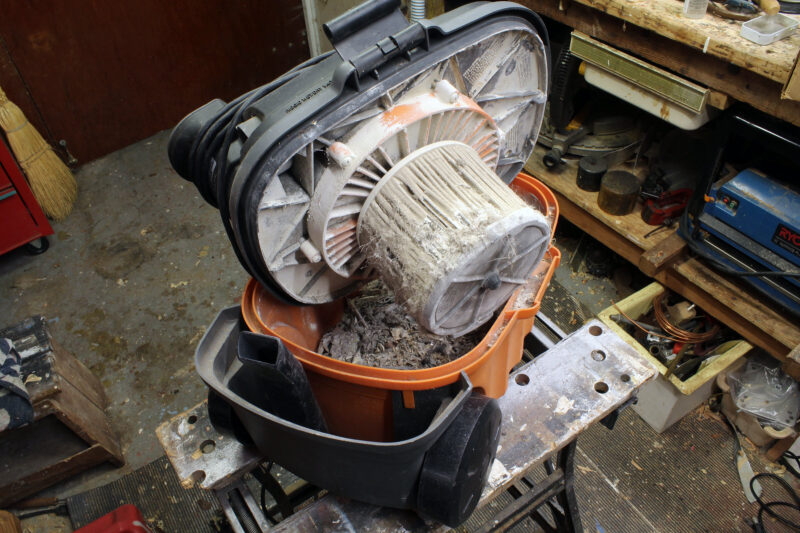 Photographs by the author
Photographs by the author
Join The Conversation
We welcome your comments about this article. To include a photo with your remarks, click Choose File below the Comment box.





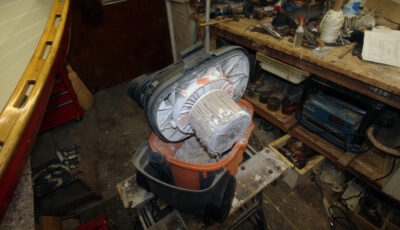
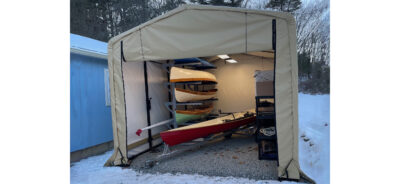
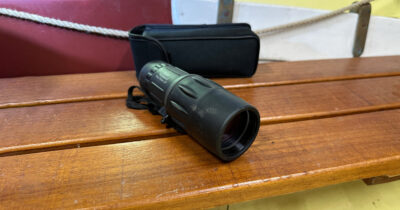

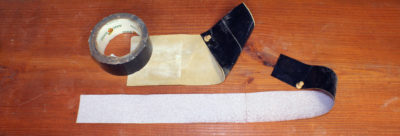



I tried the pool sock and it definitely helps. Lately I’ve started buying the bags that wrap around the inside of the vacuum. They attach where the hose comes in and follow the contour of the tank leaving the filter in the middle with no direct exposure to dust. When full, you pull it out like a stand-up house vacuum and toss it. This only works for dry material since the bags are made of paper.
This may be the best how-to article I’ve read in the past I-don’t-know-how-many years! It makes, not only, one of the most tiresome workshop chores easy and fast, it also does the same in the kitchen. It will definitely increase my usage of both my vacuums and my blenders. Eureka!
I think this would be a good use for that old 120v drill in the drawer. Much faster than battery ones.
I used my old plug-in drill and the filter did indeed spin faster. It also wobbled more. To take advantage of a faster spin, the open end of the filter need a fixture to keep its center on the drill’s axis of rotation. The cordless drill is fast enough.
Alternatively, buy a fibreglass filter (mine has lasted 10+ years) and clean it by spraying water from a hose from the inside. Let it dry thoroughly before re-assembling.
Good idea! Would it help to put a nut, then a lock washer then more nuts and lock washer on the end of the bolt to give the drill a hex shaped thing to grab onto in lieu of chewing up the threads? A hex is obviously great for a 3-jaw chuck.
If I recall correctly, a 1/4-20 nut takes a 7/16″ wrench and common drill chucks have a 3/8″ capacity. Perhaps grinding or filing 3 flats on the bolt, or just taking the sharp edges off its threads would do the trick.
Great idea…for both kitchen and shop vac! In terms of centering, I would cut discs for top and bottom that fit the inside diameter of the filter and glue them, on center, to larger discs. that way the smaller discs hold the filter on center as it spins.
spot on my friend
Great tip for a constant problem in my garage and basement. Very good solution I’ll be trying very soon. Thanks!!!!
A cyclone separator mounted on a bucket works pretty well to catch most of the stuff before it gets to the filter. Eventually the filter does need cleaning, I will try your idea, Chris.